Fuerteventura is one of the islands that makes up the Canary Islands (Spanish: Las Islas Canarias). It is the second largest island of the Canaries to Tenerife, with population around 106 000. Fuerteventura is located south of Lanzarote, the two islands lie only 11 km apart.
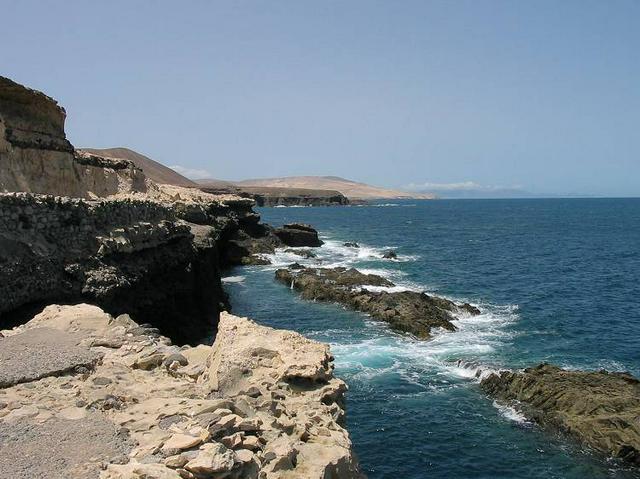
The island is about 100 km long and 30 km wide. The mountains (of volcanic origin) in the north reach a height of up to 700 m above sea level (Maxorata). The highest peak is in the south - peninsula of Jandía, the Pico de la Zarza (807 m).
Fuerteventura is divided into six historical municipalities (though most tourist areas are fairly recent):
- Puerto del Rosario. The capital on the east coast, with airport to the south. The community area stretches to the west coast, few tourist attractions are in the area.
- La Oliva. Covers the whole north of the island, but still it's quite small. Isla de Lobos is also part of the municipality. Known for Corralejo, Villaverde, El Cotillo and Parque Holandes
- Betancuria. The former capital, it's a favorite excursion destination - combined with Valles de Santa Inés and Vega de Río Palmas.
- Antigua. With Caleta de Fuste
- Tuineje. With Gran Tarajal
- Pájara. The south peninsula, with the tourist centers Costa Calma and Morro Jable. Contains natural park Jandía, small and remote Cofete and Villa Winter.
Puerto del Rosario. The capital on the east coast, with airport to the south. The community area stretches to the west coast, few tourist attractions are in the area.
La Oliva. Covers the whole north of the island, but still it's quite small. Isla de Lobos is also part of the municipality. Known for Corralejo, Villaverde, El Cotillo and Parque Holandes
Betancuria. The former capital, it's a favorite excursion destination - combined with Valles de Santa Inés and Vega de Río Palmas.
Antigua. With Caleta de Fuste
Tuineje. With Gran Tarajal
Pájara. The south peninsula, with the tourist centers Costa Calma and Morro Jable. Contains natural park Jandía, small and remote Cofete and Villa Winter.
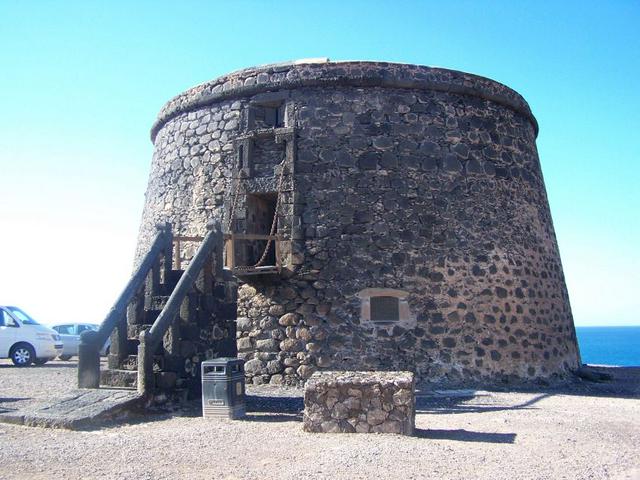
- Betancuria.
- Caleta de Fuste.
- Corralejo.
- Sotavento.
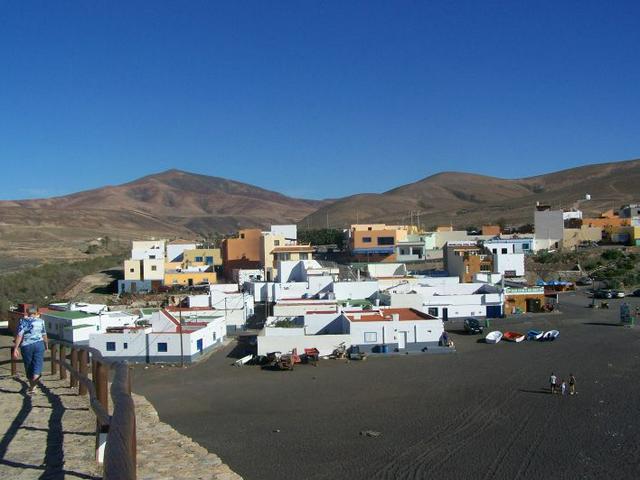
- Ajuy. - The small fishing village on the west coast is always worth a visit and not overcrowded. Here one can visit the caves of Ajuy, but the rocks are already very worth seeing. There is also the black sand beach. There is plenty of parking for cars. Also, a small restaurant is here - with friendly service, simple Spanish food and drinks. Swimming is not too recommended here - after a few meters of beach it gets very deep and there are strong currents. However, you can just lie in the still shallow waters and get a refreshment from the Atlantic.
A small village in the south (west coast of it), Jandia peninsula. It has nothing to do with the tourist harbors on the rest of the south coast. It is worth a trip if you have a car - without it, it's hard to reach. The place itself is not very big, but has a bar.
Back at the time, Franco had here a military restricted area. From here, Franco pursued his interests in Africa. Nearby is also the Villa Winter., which is named after the name of the builder (Gustav Winter), surrounded by many legends.
There is a non-dangerous, but very nice beach. Hardly any people are here. In the vicinity of Cofete there are a lot of places where you can make beautiful landscapes.
Back at the time, Franco had here a military restricted area. From here, Franco pursued his interests in Africa. Nearby is also the Villa Winter., which is named after the name of the builder (Gustav Winter), surrounded by many legends.
At south-east coast, German-oriented. The right place for relaxation without stress. The town of Costa Calma is located outside of the tourist town. There are only a few houses. In the tourist resort of Costa Calma everything revolves around the tourist.
Eternally long yellow sand beaches mark the place, inviting for long walks. In the area of the village itself, they are guarded and quite cramped. To the south it becomes less sandy. Here the surfers and the kite surfers share their area. The waves and wind are always certain here.
West from Corralejo. It is a small place that has been the focus of tourism for only a few years. The individual life has not yet fused very much with the tourist. This is ideal for individual tourists.
The tourist buses also pass El Cotillo. The destination is the fortress of the old fishing village, where lime was burnt in the past. From the tower it was seen whether pirates were approaching the island. In the fortress, art pictures are exhibited. For a glimpse of El Cotillio this stop is enough. But the place has offers next to the fortress too. In the small Cotillo there are surprisingly many good restaurants (especially Canarian and Italian cuisine).
The place has a lot of peculiarities. From the fortress one has a beautiful view of the coasts to the north and south. The lagoon beach in the north towards lighthouses is suitable for families with small children. In the south the waves roll harder to the beach.
Hourly bus from Corralejo to El Cotillo is available. The direct bus connection with Puerto del Rosario is much rarer. It is best to visit the place with a rental car - parking is without problems.
A purely touristic artificial village, bordering Morro Jable.
Jandia itself consists only of hotels, shops, bars and restaurants. The village has even a small zoo.
The most important asset of Jandia is surely the beach. From Morro Jable, the beach with bright yellow sand stretches far east. There are beach sections that are guarded (with rent couches, bars and fast food), but also sections where you are very alone.
In the direction of Morro Jable the waves can hardly be felt. Going east, the waves become stronger. At the corner, where it goes northwards, a rock divides the beach - high waves can be enjoyed there.
The main street is also the shopping street. All are located in the north of the street, so you always have a view of the sea.
On Thursday, the African market takes place on the market square of Jandia. Plagiarism of all kinds can be bought here - in addition to fresh fruits, vegetables.
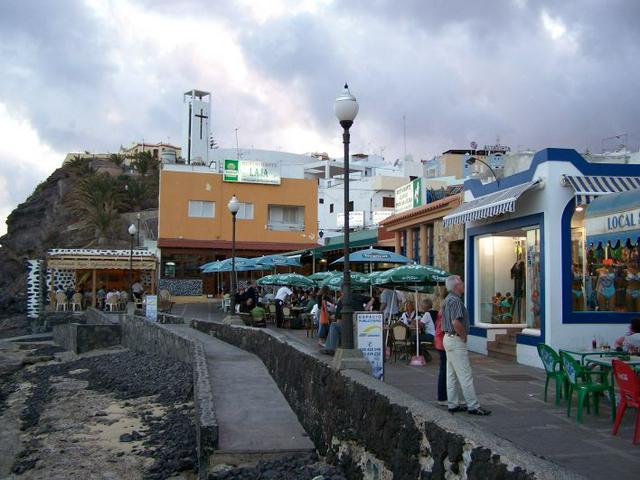
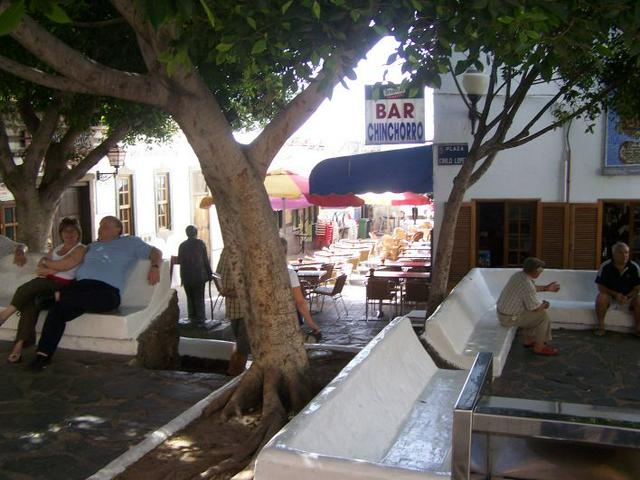 The village begins with the harbor. There is a daily ferry service to Las Palmas - approx. 3.5h hours. Morro Jable can not be reached directly from the port, a rock wall blocks the path.
The village begins with the harbor. There is a daily ferry service to Las Palmas - approx. 3.5h hours. Morro Jable can not be reached directly from the port, a rock wall blocks the path.
The village of Morro Jable rises up the mountain. Here are the people who work in the Jandia hotels. From the port you have to go up the mountain, then down to the village center. The town center has not yet been taken over by tourists and there is something to do until late nights.
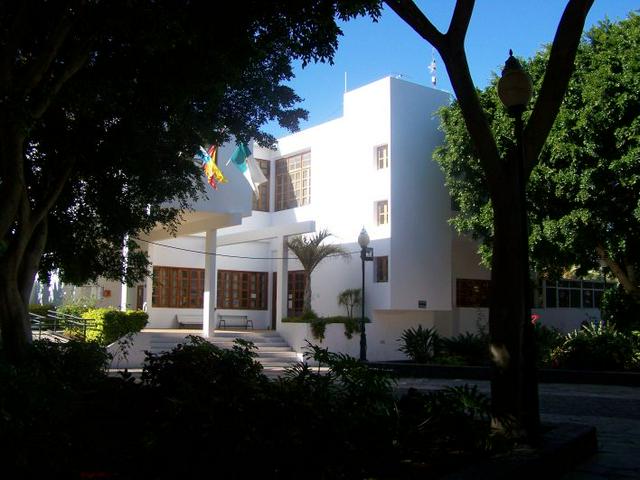 The capital of the southern province, but it's just a small village in the middle of the island. Here the taxes from Costa Calma and Jandia flow - which shows in the city (like in town hall). In the summer even a fresh water swimming pool is available - in contrast with water prices on the island.
The capital of the southern province, but it's just a small village in the middle of the island. Here the taxes from Costa Calma and Jandia flow - which shows in the city (like in town hall). In the summer even a fresh water swimming pool is available - in contrast with water prices on the island.
The town is nevertheless worth seeing, to get a glimpse of the life of the locals. You can enjou some Spanish cuisine - or coffee "Leche y Leche". It's an espresso, on which one puts sweet condensed milk. If you turn it around, it becomes sweet milk coffee, if you do not, then you have a special taste experience.
The church in the center has a nice portal. Aztec art can be visited here. There is a lot of speculation as to how these works have emerged. The most plausible - a monk came home richly after the trip to South America and donated this portal.
Betancuria.
Caleta de Fuste.
Corralejo.
Sotavento.
Ajuy. - The small fishing village on the west coast is always worth a visit and not overcrowded. Here one can visit the caves of Ajuy, but the rocks are already very worth seeing. There is also the black sand beach. There is plenty of parking for cars. Also, a small restaurant is here - with friendly service, simple Spanish food and drinks. Swimming is not too recommended here - after a few meters of beach it gets very deep and there are strong currents. However, you can just lie in the still shallow waters and get a refreshment from the Atlantic.

- Isla de los Lobos.
Isla de los Lobos.
Fuerteventura is a volcanic island, in some places untouched but in others heavily developed for tourism. "Fuerteventura" roughly translates to "strong winds" or Fuerte (Strong) Ventura (Venture).
Spanish is the national language in Fuerteventura, although English and German are widely spoken in many tourist areas.

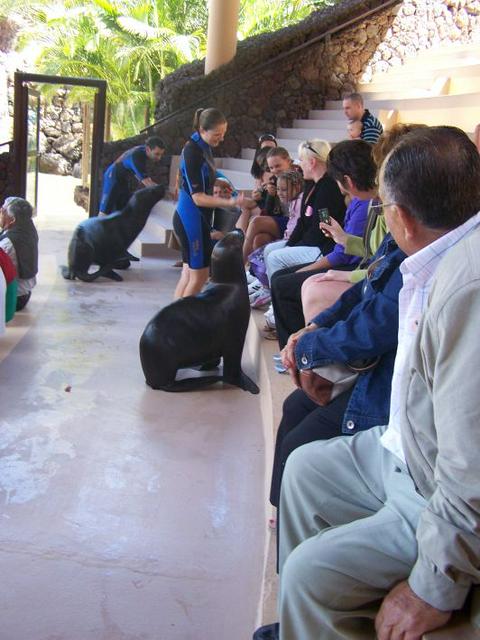
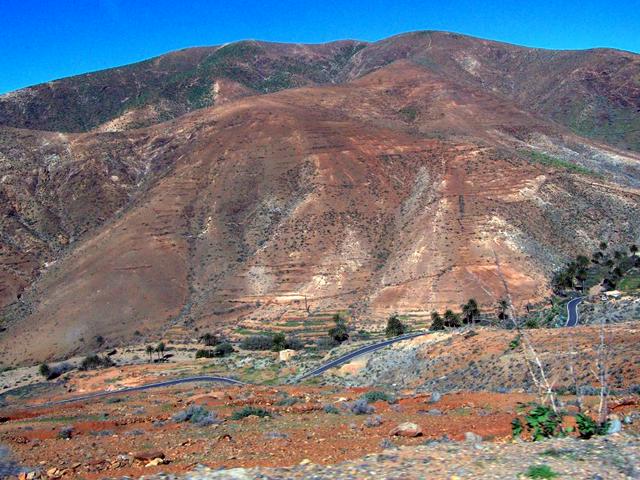
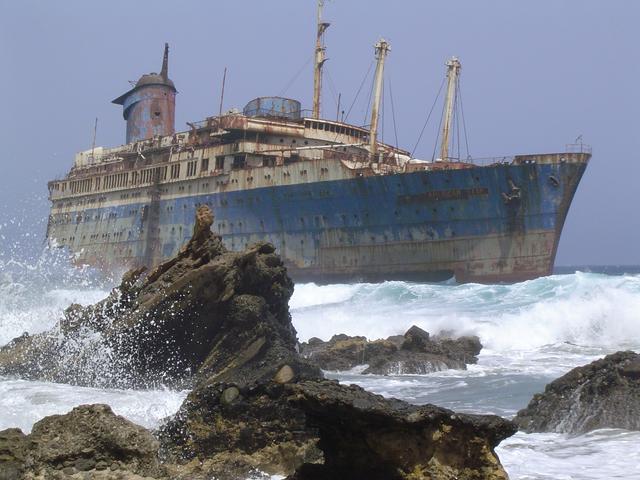
- Baku Water Park.
- Lighthouse Faro de La Entallada.
- Oasis Park.
- "American Star" shipwreck.
- Corralejo sand dunes.
- Tomato plantages.
Baku Water Park.
Lighthouse Faro de La Entallada.
Oasis Park.
"American Star" shipwreck.
Corralejo sand dunes.
Tomato plantages.
Important centers of tourism are Jandia and Costa Calma on the south, and Corralejo on the north.
- Beaches: There are many guarded ones, but you can also find secluded ones (by driving a little and then being alone on a kilometer long beach). Many colors are "available" - white, yellow, black...
- Surfing: In the summer, Fuerteventura is the first choice for wind and kite surfers in Europe. Ideal weather and wind conditions bring in lots of sports enthusiasts (wind and kite surfing). There are regular international competitions at Playa de Sotavento, where tourists can also watch the most spectacular jumps.
- Swimming: The waves sizes also differ - there are places with virtually no waves, but also places where the waves are so violent that it is advised against bathing.
- Go into the mountains to see how the locals survived on this arid island over the centuries.
- Discover the strong connections with the countries of South America. Learn a few words like GuaGua (wah wah - "bus").
Lanzarote is just a 1/4h away by ferry. Ferry connections to other Canary Islands are available too, though they take much longer.
